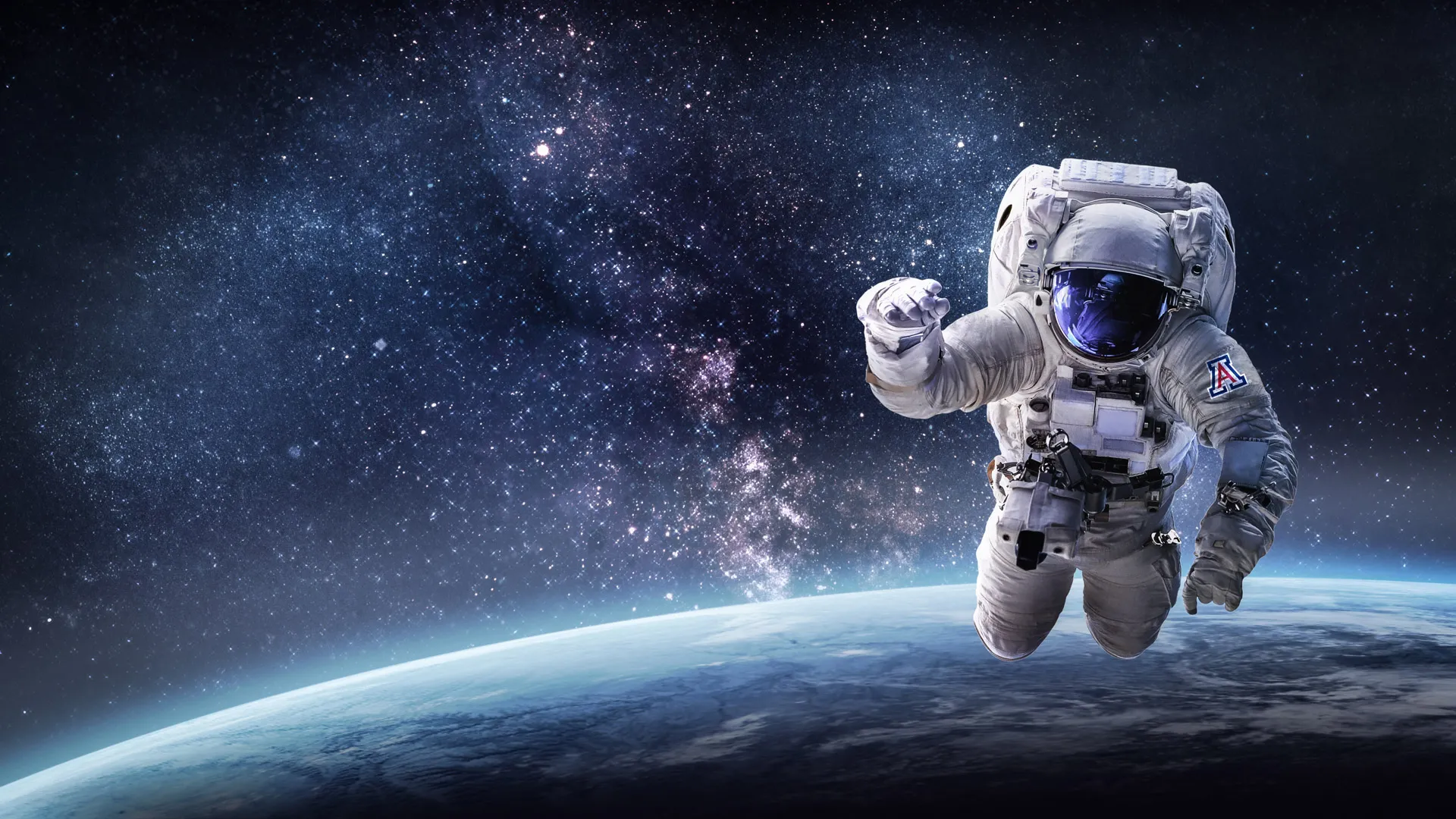Signing In Space
Biosphere 2 Astronaut Training Programs Embrace American Sign Language and AI Tech to Promote Safe Travel into the Cosmos

Adobe Stock image
When Trent Tresch envisions the future of human spaceflight, he imagines that the moon and Mars might someday be home to not just a military or scientific presence but also everyday people — plumbers, artists, teachers — from various backgrounds and abilities.
Tresch is the founding director of the University of Arizona Center for Human Space Exploration, or CHaSE, at Biosphere 2. CHaSE is a UArizona Center of Excellence focused on sustaining human presence in the solar system and fostering a global space community through accessible spaceflight training opportunities and post-training resources.
CHaSE arose through collaboration between Tresch and Kai Staats, co-founder of the Space Analog for the Moon and Mars, or SAM, also at Biosphere 2. SAM is a hermetically sealed research habitat being built to develop technologies for living sustainably on- and off-planet.
“In exploring the potentials of SAM, we developed the idea for CHaSE,” Tresch says.
He and Staats are examining creative solutions for long-term habitability on the moon and Mars while also considering how we can live more sustainably on Earth.
“We have to be at or near 100% sustainable to live off-planet long term,” Tresch says. “The technology we develop should be directly applicable to making life better here.”
A FIRST CLASS OF ASTRONAUTS
In November 2022, a first class of aspiring commercial astronauts descended on Biosphere 2 for a weekend training program conducted with Uplift Aerospace, a private aerospace company.
Tresch and astronauts Sian “Leo” Proctor and Mira Milas led the trainings. Proctor formerly piloted SpaceX’s Inspiration4 all-civilian orbital mission; Milas is executive director of UArizona’s APEX aerospace medicine fellowship.
Five of the trainees were selected from Space+, a community-led initiative launched by Uplift. The program seeks to increase access, diversity and inclusion in space exploration. Its first class of astronauts is called the Space+5.
Ruben Salinas, Uplift’s first community astronaut and the Space+5 team leader, will fly on an upcoming Blue Origin New Shepherd rocket. The rest of the Space+5 will undergo training, flying if opportunities arise.
Three additional trainees in the November cohort came from AstroAccess, a nonprofit advancing disability inclusion in space.
AI humanoid robot BINA48 also accompanied the group. Developed by Hanson Robotics in 2010, BINA48 also serves Terasem Movement Foundation Inc. The robot is being used to investigate the potential applications of machine intelligence on human-crewed space missions, especially in emergencies.
TRAINING FOR TOMORROW
According to the United States Code of Federal Regulations, launch providers must train spaceflight participants in emergency response, including to hazards like smoke, fire and loss of cabin pressure. The November trainings explored such situations.
The class practiced donning spacesuits and pressurizing them, a skill necessary to stay conscious amid emergency cabin pressure loss.
They also practiced emergency evacuation of a spacecraft after a water landing. At the Campus Recreation pool, the trainees shimmied into bright red immersion suits that covered everything except their eyes. In the water, they flipped onto their backs, swimming to a rope tethered to a life raft. There, they initiated a rescue beacon before exiting the raft to simulate a rescue. AstroAccess trainee Mary Cooper removed her prosthetic leg for the drills, successfully performing all emergency egress maneuvers with one leg.
At the pool’s other end, fellow AstroAccess trainees Eric Shear and Sheila Xu, both deaf, practiced signing underwater in different body orientations, exploring the feasibility of communicating in American Sign Language in a space environment. The two could understand each other regardless of orientation.
“The power of accessibility is that it makes our systems safer for everyone,” says Anna Voelker, co-founder and executive director of AstroAccess. “If comms systems malfunctioned in space, imagine how valuable it would be if all astronauts could communicate through sign language.”
“It’s important to envision scenarios that are off-nominal, or not normal. Everything we’re practicing requires steps to be followed in proper sequence, and this is where we’re evaluating how AI can support us,” adds Salinas.
During fire-safety training, BINA48 talked the trainees through proper responses to a cabin fire. Bruce Duncan, Terasem Movement’s managing director, says that the robot’s steadiness could prove invaluable in tense circumstances.
“BINA48’s presence allows a regular person access to specialized information without special training,” he says. “BINA48 acts as a calm expert in times of stress, calmly bringing you back to your center.”
Proctor’s lessons, meanwhile, explored how crews can foster what she calls a “Jedi” space: accessible, just, equitable, diverse and inclusive. In 2021, Proctor became the first Black female spacecraft pilot. Selected for Inspiration4 partly because of her talents as an artist and poet, she also made art with the trainees.
“I’m hoping to activate that creative side and think about the arts and humanity side of going to space,” she says.
Soon, training opportunities through CHaSE will be available to students, professionals and the community. This first training gave CHaSE leaders insight to further tailor their curriculum.
“UArizona is uniquely situated for a program like this,” Tresch says. “We are one of the nation’s highest space- and science-funded universities. We have Biosphere 2 — this incredible habitat with this rich history. “And with that history, we’re able to build the future.”
